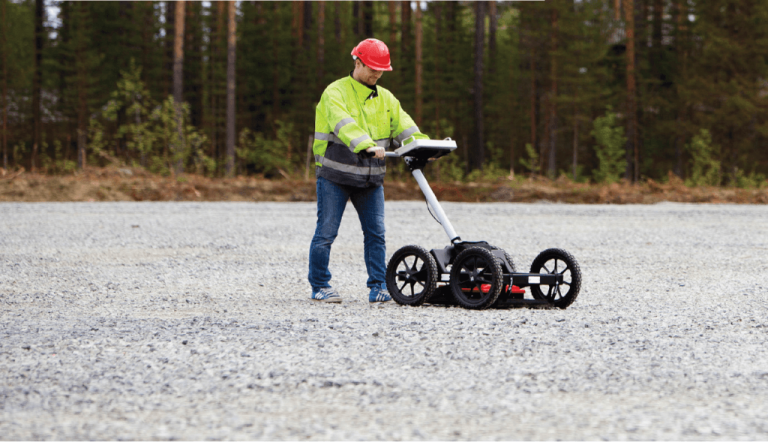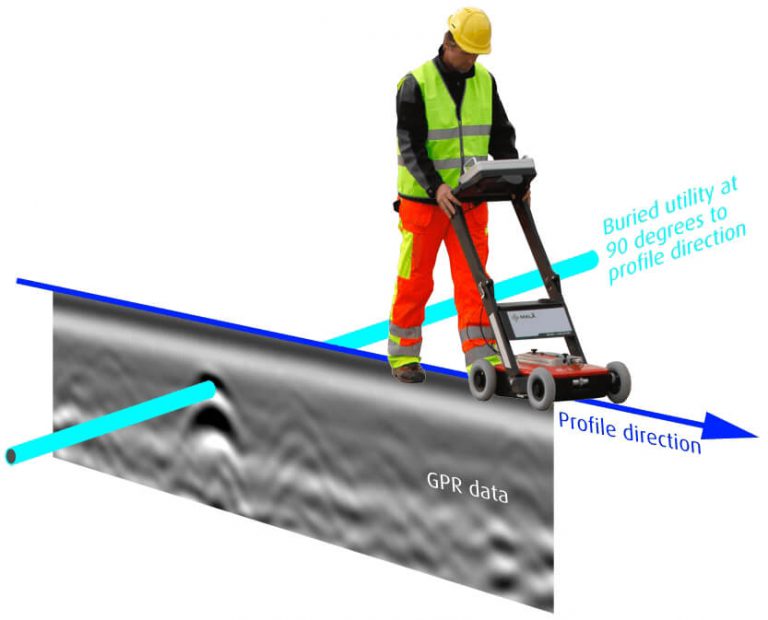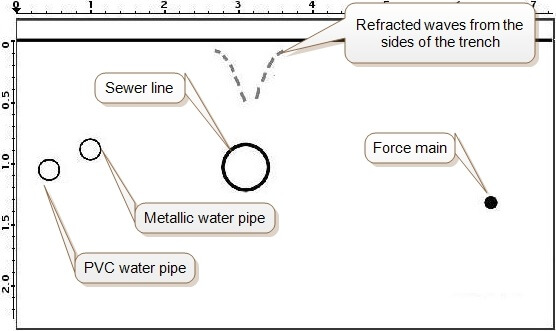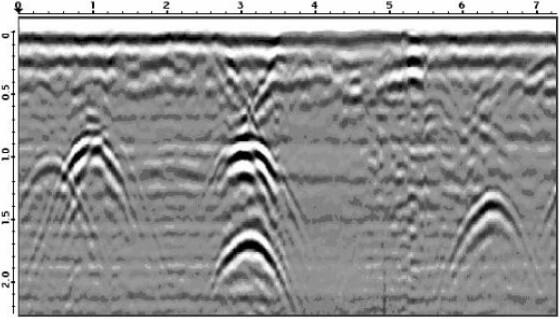
Data Interpretation
Buried utilities are displayed in the GPR profile as a hyperbola, which is often referred to as a signature.
The shape, size and intensity of these signatures can help identify the features that are causing the reflections. The following are examples of data interpretation based on analysis of the hyperbolic reflections.


